Art Collectors
Architect and Collector David Montalba on Enriching Intimate Spaces With Art
Plus, what he learned from a run-in with Ed Ruscha.
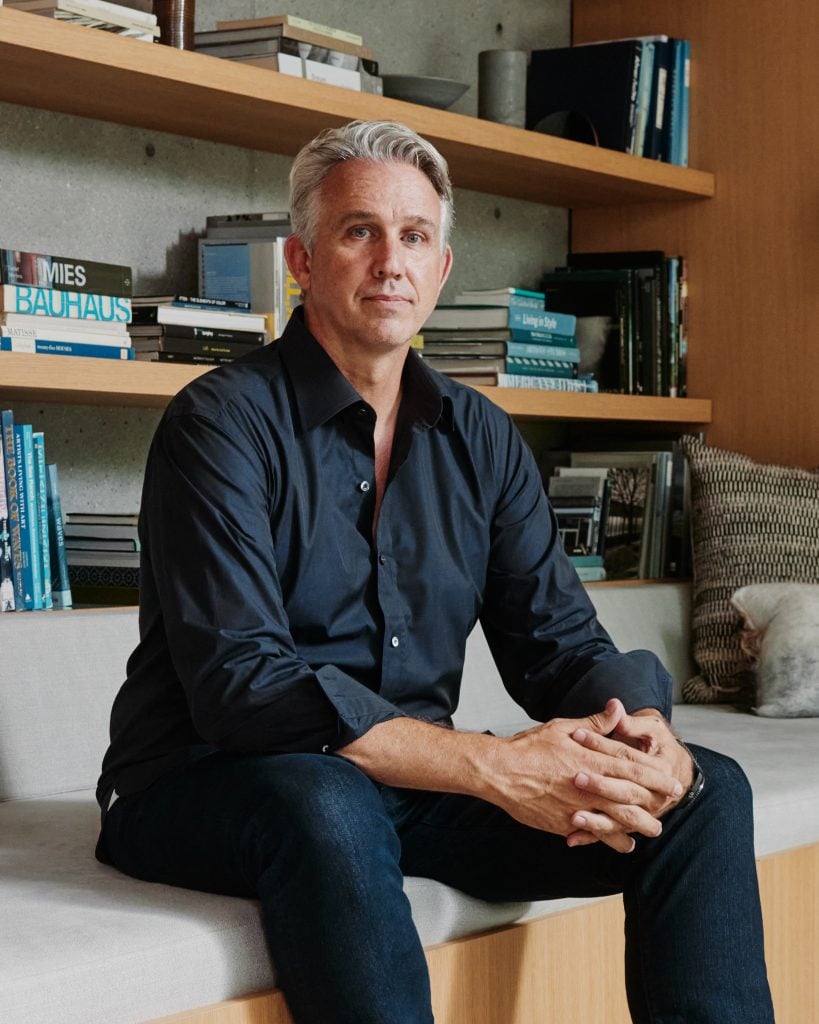
Plus, what he learned from a run-in with Ed Ruscha.

Katie White

Swiss-born architect David Montalba is known for his refined eye—both in the spaces he designs and the art he collects.
His firm, Montalba Architects, founded in 2004, centers its design practice around material integrity, purity of forms, and an embrace of natural light. With offices in New York, Los Angeles, and Lausanne, the firm’s recent high-profile projects include The Row’s West Hollywood boutique, Soho House’s Little Beach House, and Nobu Malibu, among others.
A collector since his late 20s, Montalba seeks out works by artists acutely attuned to the powers of color, material, and form. His collection includes works by Robert Mangold, Keith Haring, James Turrell, Anish Kapoor, Tara Donovan, and Sarah Crowner, across painting, sculpture, photography, and prints.
In the three-story Santa Monica home he designed—and shares with his wife and kids— Montalba has selected works that do more than merely decorate the walls. They pack a punch. Take, for instance, the massive carved granite sculpture by artist Andre Raboud that anchors the home’s courtyard with its totemic might, or a monumental minimalist painting by Brent Wadden that centers the living space. It’s not surprising to learn that the Montalbas acquire works with specific spaces in mind. The collection and the home go hand in hand.
According to Montalba, art “gives energy, spirit, and colors our lives in ways less fixed elements cannot,” and he believes it “can elevate our experience of this world.”
We caught up with Montalba and discussed collecting dreams and regrets, as well as a run-in with Ed Ruscha that gave new insights.
What was your first purchase?
Our first purchase was a still life work by a rather obscure Belgian painter in Geneva, Switzerland in the mid-1990s. I think we paid $600 for it, although I was in my early 20s so it seemed like a lot more at the time!

Courtesy of David Montalba. Photo: Tom Cockram.
What was your most recent purchase?
A photograph from James Turrell of Sunset at Roden Crater, which anchors the top of one of the staircases in our L.A. home. His work has a ceremonial timelessness to it that is very grounding and this piece exudes that presence as well.
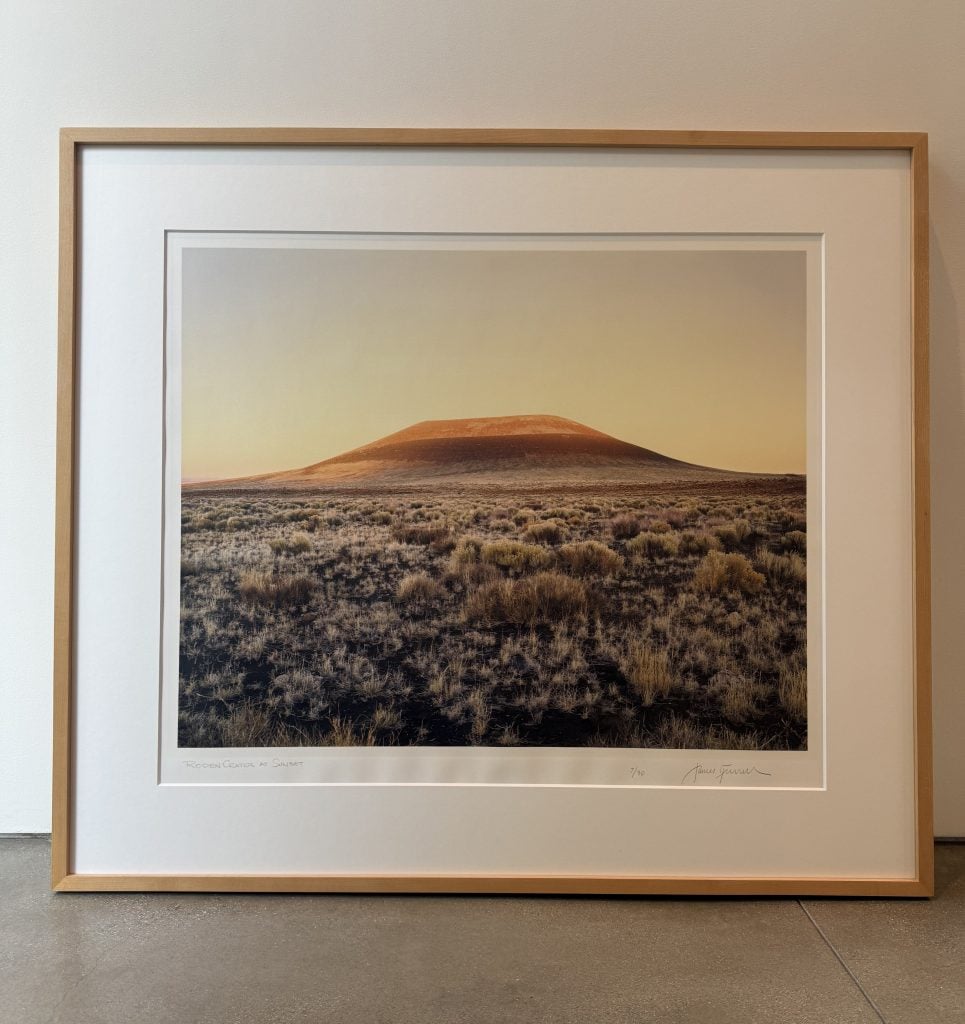
A photograph Sunset at Roden Crater by James Turrell. Courtesy of David Montalba.
Which works or artists are you hoping to add to your collection this year?
Something from Wade Guyton, I hope. I have always loved the compelling layered and yet forceful almost architectural characteristics of his work. Always looking for the right one!
What is the most expensive work of art that you own?
I’d probably say an Ed Ruscha original we purchased through Gagosian. I remember bumping into Ed during the opening reception at the recent MoMA retrospective and asking him about the work. In the most Ruscha way, he said to me, “David, it’s just a play on words. No big deal.” Later, it struck me that what can make his work so impactful is it seems so casual and simple but it concurrently has greater meaning that captures his unique lens on our culture.
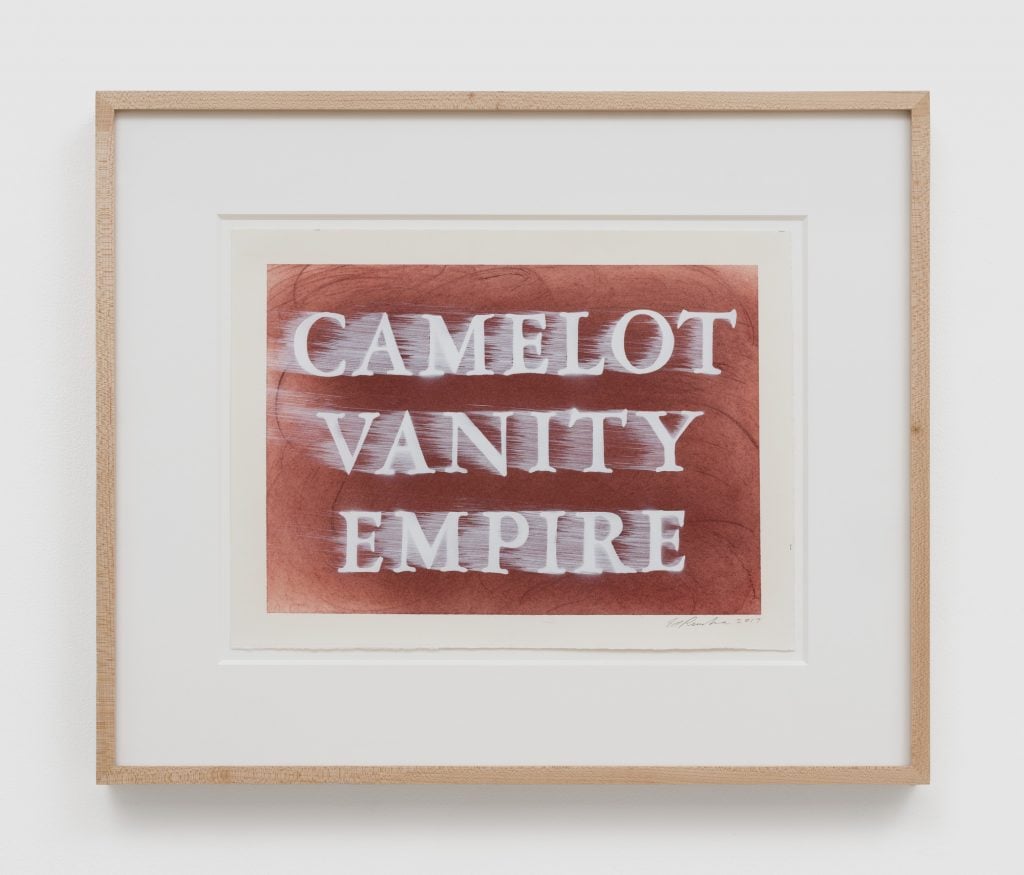
Ed Ruscha, Camelot Vanity Empire. Courtesy of the artist and Gagosian.
Where do you buy art most frequently?
Generally, directly from galleries, whether at their physical location or at fairs. Museums are also great ways to expose myself and get familiar with artists and their work, but generally, we purchase from gallerists we have talked to before. We have purchased smaller works through online auctions as well, especially if it’s a charitable auction.
Is there a work you regret purchasing?
Maybe a piece we purchased from an auction a few years ago from an artist I really appreciate but certainly didn’t need. It was a charity auction for the United Nations’s support for refugees, so although the purchase wasn’t necessary it was for a good cause.
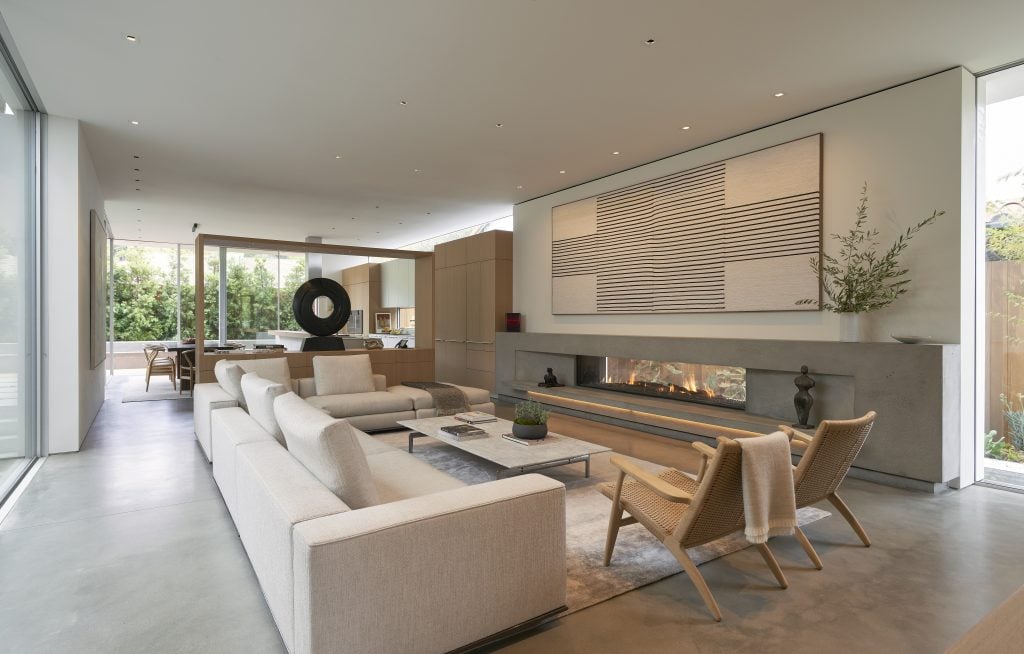
A Brent Wadden work hangs over the fireplace in Montalba’s home. Courtesy of David Montalba. Photo: Kevin Scott.
What work do you have hanging above your sofa?
We have a work by Brent Wadden we purchased from Pace Gallery in London. It was the anchor of the show in 2018 and is now our centerpiece. What’s interesting about it is that we had been following Brent’s work for some time. We wanted to find a piece that worked well with the particular wall but it needed to be at least 11 feet wide, not an easy task… We found it!
What about in your bathroom?
In our bathroom, we have several works, but the most interesting is a Robert Mangold that anchors the view through the room.
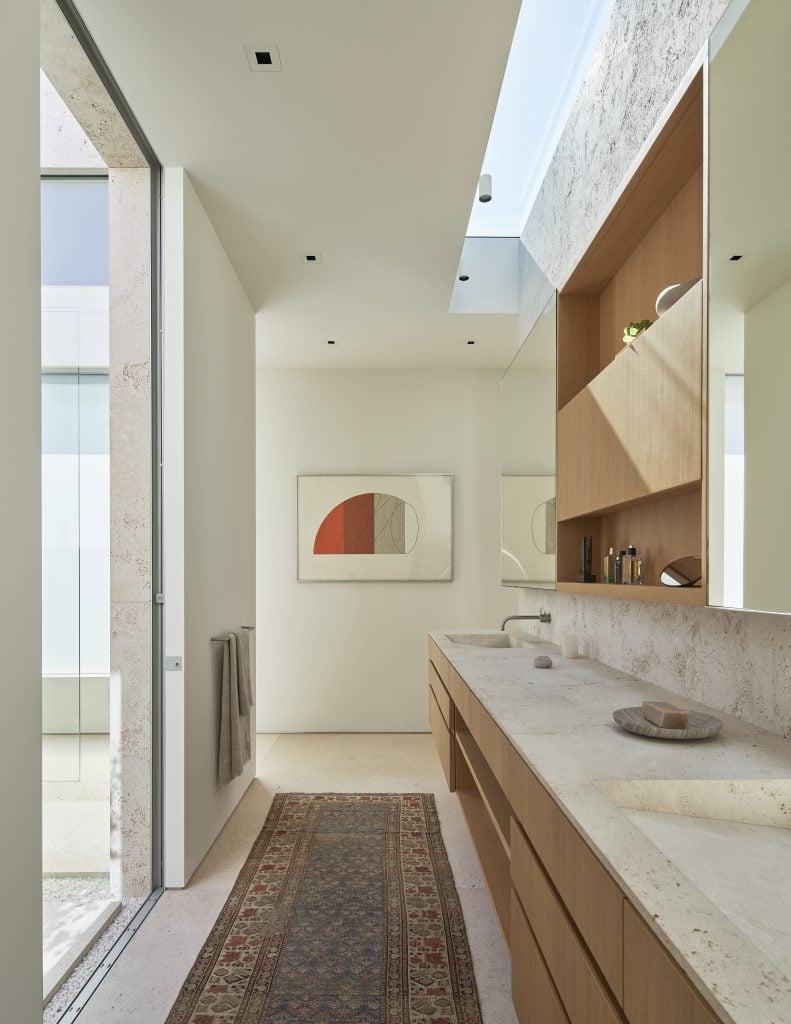
A Robert Mangold work hangs in the Montablas’ bathroom. Courtesy of David Montalba. Photo: Kevin Scott.
What is the most impractical work of art you own?
Probably some of the larger sculptural works that we really would have a hard time placing if we wanted to move. They were works we collected at a specific time to finish the volumes and spaces and have very specific places in our home. One, for example, is the vertical carved granite sculpture that sits in the center of our basement courtyard by Andre Rabboud.
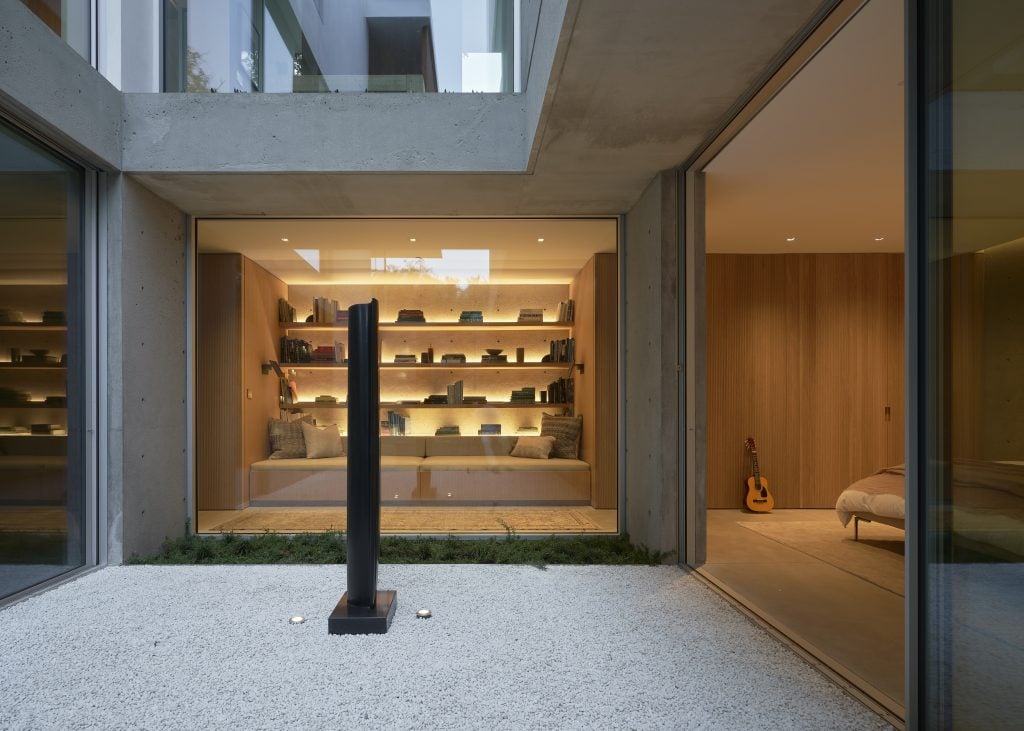
A striking statue by Andre Raboud defines the courtyard. Courtesy of David Montalba. Photo: Kevin Scott.
What work do you wish you had bought when you had the chance?
We were traveling in Tokyo years ago and there was a small show in a gallery of Sterling Ruby’s original window painting series, which I love due to their contrasting ability to capture both movement and stillness. At the time we talked about it but ultimately didn’t get one. Big mistake given the artist’s subsequent rise in notoriety — and although I have been looking ever since, I still haven’t found the right one!
If you could steal one work of art without getting caught, what would it be?
Probably Matisse’s cutouts of the swimming pool at MOMA in New York City as it envelops you entirely as you move through it! Or perhaps Ferdinand Hodler’s Lake Geneva from Chexbres, overlooking the Savoyerberge which reminds me so much of my family’s home in Switzerland. Or, if I can have another one, perhaps one of Cy Twombly’s oversized “Bacchus” series. Really, this is a tough question as the mind doesn’t stop going with ideas!
What has collecting taught you?
Art means what you, or rather I, want it to. It’s certainly an expression of an artist which we either gravitate towards or not. It gives energy and spirit, and colors our lives in ways less fixed elements cannot. In contrast to nature, which also is a forceful element in our lives, it tends to capture a moment in time or history that has its own story of our culture, interests, and the human journey.
Ultimately, its value is not directly tied to all this as that is more a reflection of perception within the market and culture. That’s the long way of saying that art means a lot to me. It’s helped me understand that creative works complete a dimension of our lives and our physical environment that is unique and can elevate our experience of this world.
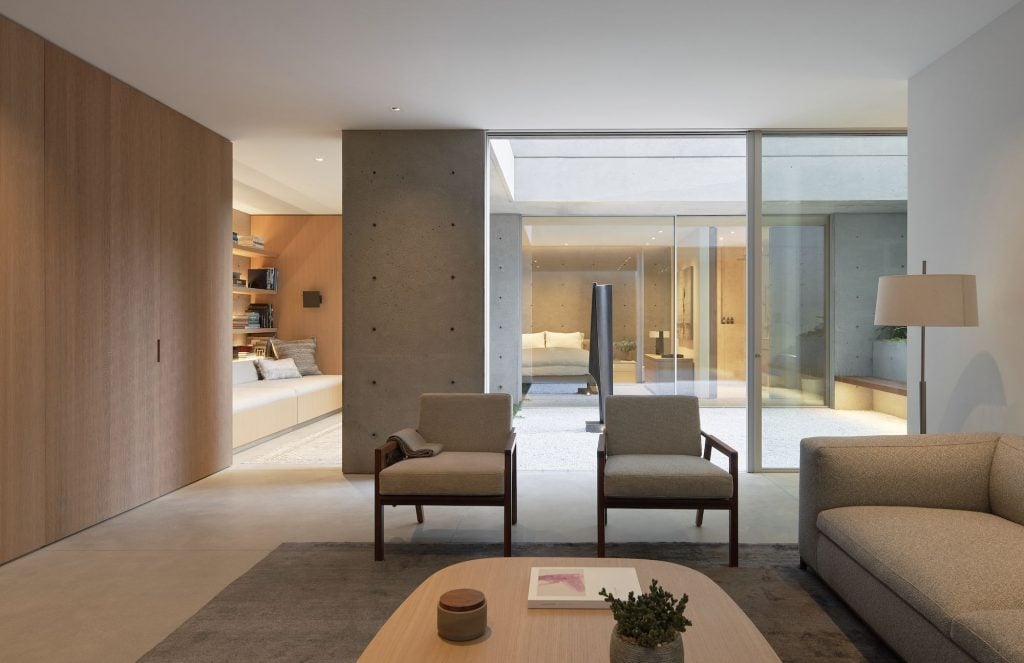
Courtesy of David Montalba. Photo: Kevin Scott.
What does style mean to you? How do you define the relationship between art and style?
Style to me, as it relates to art, is a reflection of the energy or spirit within a work. One could contribute the techniques of an artist to a style, but I would suggest it’s more about the energy that is brought to the work by the artist and the intention behind it. I do think there is a quiet confidence and clarity to strong works of art that are shared with a strong sense of style. It’s interesting when the right work of art is in the right space and the style of the architecture and design complement the work, it can soar in its impact. Certain works exude a certain style and perhaps that’s it, you know when you are in its presence but it’s often hard to pinpoint what makes it so.